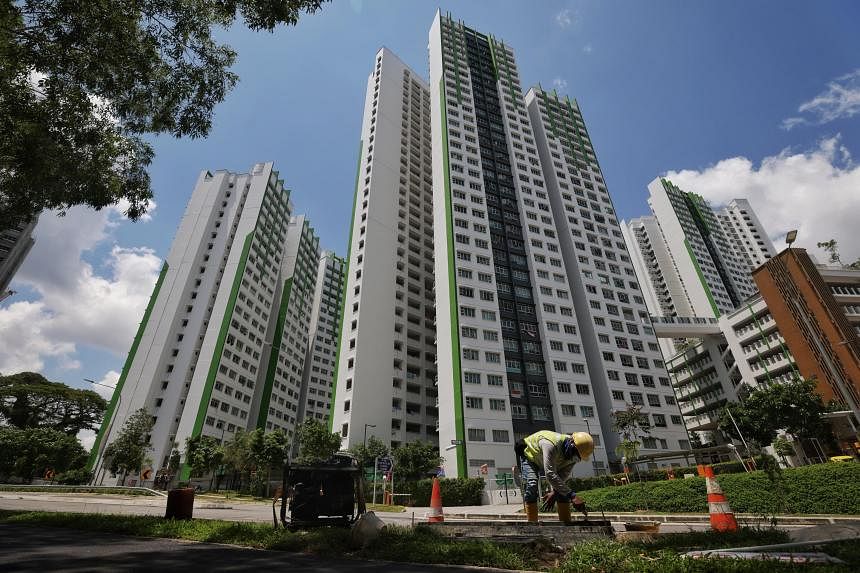SINGAPORE – The vast majority of public rental households – more than nine in 10 – have four or fewer people, Minister of State for National Development Muhammad Faishal Ibrahim said in Parliament on Tuesday evening. Public rental flats offered by the Housing Board are mostly one- or two-room flats.
HDB has begun efforts to provide a better environment for larger families with young children, including building two-room rental flats with an additional partitioned space which can be used as a child’s room, or a study or activity room, said Associate Professor Faishal.
He was responding to an adjournment motion filed by Ms Carrie Tan (Nee Soon GRC), who urged the Government to consider factors like space and aesthetics in building public rental flats, with the goal of uplifting low-income families and helping them reach financial stability.
“It is not uncommon when I do my house visits to come across families with three, four, sometimes five children living in a two-room flat,” she said, urging the Government to study living spaces and their impact on early childhood development outcomes.
Ms Tan said overcrowding in small rental flats can lead to infections spreading more easily among family members, with poor health leading to higher rates of employment turnover and school absenteeism.
Lacking the space for daily activities such as drying clothes also results in household belongings spilling into common corridors. This poses potential hazards and creates tension with neighbours, adding to the family’s stress, added Ms Tan.
Children in rental flats also struggled with home-based learning during the Covid-19 pandemic, and have been observed to have poorer hand-eye coordination and throwing and catching skills than other children, likely due to a lack of space at home for such activities, she said.
Citing the Urban Redevelopment Authority guideline of 70 sq m as a reasonable size for small families, Ms Tan asked the Ministry of National Development about the prevailing floor area of one- and two-room public rental flats, and whether there is a minimum space per resident that allows for conducive living.
In response, Prof Faishal said HDB does not have a “hard space norm per person”, but recognises space concerns for some larger households.
It has taken measures such as allocating two flats to larger families which form two family nuclei and offering three-room public rental flats to some larger families with children on a case-by-case basis.
Prof Faishal also gave an update on Singapore’s integrated blocks that mix rental and purchase flats to encourage social mixing.
A study on the first mixed block here, Marsiling Greenview, completed in 2018, found that owners and tenants have the same perceptions of what makes a liveable environment.
They also act in similar ways to maintain these standards, such as upkeeping shared corridor spaces.
“We found that the design features have encouraged interactions and ties between owners and tenants,” said Prof Faishal.
These include locating sold flats and rental flats on the same floor, minimising visible differences between sold flats and rental flats, and having shared amenities such as playgrounds.
“We are encouraged by these findings, and will apply these learnings to the design of future integrated blocks,” he said.
Three integrated blocks have been built, and another 17 blocks will be completed in the next five years, he added.
“We will continue to build them, including in future Prime and Plus projects.”
He added: “We are also progressively redeveloping older clusters of rental flats, and tenants who are relocated can move to newer rental flats with improved designs.”
On top of giving housing grants to rental flat residents, a dedicated team at HDB guides tenants to fulfil their dream of buying their own home. The team advises them on their housing budget and options, and helps with flat selection, application and booking.
Prof Faishal said the team has reached out to 1,500 families in the past three years.
On the importance of aesthetics for well-being, Ms Tan raised the example of a homeless shelter in the United States with a pleasing design meant to promote safety and well-being.
The project by a non-profit organisation features a connection to nature with plenty of light and plants, natural building materials such as wood, and a calming green colour palette.
She quoted the shelter’s founder on creating a beautiful space: “It’s about helping families feel worthy (so) that they can get up and do the hard work to get their lives back on track.”
She said: “This belief, long held by too many in the system, that providing a pleasing and comfortable environment for public rental housing residents might demotivate them from working hard to move out, also really needs to change.
“These are limiting beliefs that curtail the possibilities and potential of our own citizens who are striving hard to improve their lives.”
Ms Tan added: “Instead of assuming and blaming ‘lack of personal motivation’ for poor social mobility outcomes, let’s take a more scientific and proactive approach to study the environmental factors that we can enhance to improve human motivation and potential.”


